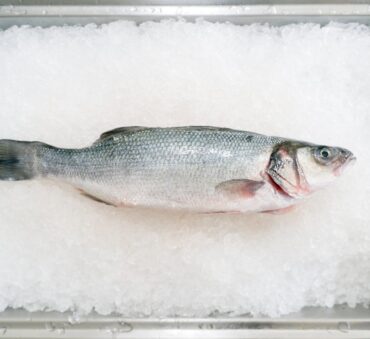Did you know that about 84.3% of unused food in restaurants ends up in the trash?
Additionally, the hotel industry produces 79,000 tons of food waste annually.
This not only adds to the growing concern about food waste in landfills but also highlights a critical need for sustainable waste management in the sector.
But how can we reduce food waste in the hospitality industry?
In this blog post, we’ll explore the challenges, best practices, and causes of food waste in the hospitality industry, along with the benefits, future trends, and regulations to be aware of.
Key Takeaways
- Hospitality industry food waste is caused by overproduction, inaccurate portion sizes, and buffet-style dining.
- Approximately one-third of all food produced in the food and hospitality sector is wasted globally each year.
- Compliance with food waste laws and regulations is crucial for hotels and restaurants to minimize their environmental impact and support sustainable practices.
- Reduction of food waste generation in the hospitality industry is achieved through innovative practices like food waste upcycling and waste-to-energy technologies.
Causes of Food Waste in the Hospitality Industry
In the hospitality industry, where every dish and drink symbolize luxury and indulgence, food waste emerges as a paradoxical challenge. Often, it’s not just the abundance of food that leads to waste but the underlying practices and planning strategies—or lack thereof.
Here are the main contributors to food waste:
- Over-preparation: Kitchens and catering services frequently overestimate the necessary quantity of food. This over-preparation, while intended to ensure customer satisfaction, often results in large quantities of unused food.
- Mismanagement of inventory: The lack of efficient tracking and understanding of stock levels results in huge amounts of perishables expiring before being used. This inefficiency is not only a waste of food but also of the resources spent in procuring and storing these items.
- Portion sizes: Generous servings, a hallmark of hospitality, can lead to guests leaving substantial amounts of food uneaten. Furthermore, strict aesthetic standards lead to discarding perfectly edible items that don’t meet the visual criteria.
Addressing these issues calls for a comprehensive food waste audit, a crucial step in identifying the inefficient practices leading to waste. This can help pinpoint specific areas where waste occurs and create targeted strategies to reduce food waste in the hospitality sector.

Food Waste Management in the Hotel & Accommodation Sector
With diverse clientele and fluctuating occupancy rates, managing food waste in the hotel industry becomes a complex task.
Let’s delve deeper into the challenges and potential solutions for reducing and managing food waste in hotels:
Scale of Food Waste in Hotels
Food waste in hotels statistics indicate that the accommodation sector in the United States alone generates millions of pounds of food waste annually. Here are some key findings:
- A case study of a lunch buffet at a hotel showed that 46% of the food produced was not consumed.
- An audit of an 800-person event found that the kitchen produced about 2 pounds of food per person for lunch, whereas an average person consumes only about one pound.
- It is estimated that 40% of food waste occurs in customer-facing businesses like hotels, which are responsible for $35 billion in catering and banquets each year in the U.S.
- Only 32% of hotels have a donation program to manage excess food.
Identifying Key Challenges in Hotel Food Waste
Hotels face unique challenges when it comes to managing food waste, especially due to the nature of their operations:
- Buffet service model: Buffets often lead to excessive food production, as hotels aim to maintain an image of abundance and variety. However, this leads to significant waste, as not all prepared food is consumed.
- Guest behavior: Many guests, attracted by the variety, often take more food than they can consume, contributing to waste.
- Unpredictability of guest numbers: This makes it difficult for hotels to plan food quantities accurately.
- Lack of strategic planning: One study points out that many hotels lack the necessary tools and strategies to effectively measure, track, and reduce food waste. This often leads to missed opportunities for reducing waste and cost savings.
Innovative Strategies for Hotel Food Waste Management
In the hospitality industry, hotels are adopting innovative strategies to combat food waste. For instance:
- Smart technologies: Utilizing advanced technologies like smart fridges and inventory systems helps track food consumption and expiration dates. This data-driven approach enables hotels to minimize food waste through efficient ordering and preparation.
- Local community and supplier collaboration: Partnering with local communities and suppliers, hotels are focusing on sustainable sourcing and supporting local recycling and waste reduction initiatives.
- Staff training on sustainability: Comprehensive training programs help staff understand their role in waste management and contribute effectively to sustainability goals.
- Waste audits and mapping: Conducting regular waste audits and stream mapping allows hotels to analyze waste patterns, identify inefficiencies, and develop targeted waste reduction strategies.
- Circular economy solutions: Implementing circular economy principles, such as upcycling and repurposing materials, helps hotels reduce waste and embrace resource efficiency.

Food Waste Management in Restaurants
From the kitchen to the table, every stage in the culinary journey is a potential point for waste generation.
Let’s take a closer look:
Scale of Food Waste in Restaurants
In the United States alone, it’s estimated that about 11.4 million tons of food waste are generated annually by restaurants, contributing significantly to overall food waste. This is not just an environmental issue but also a financial one, as the cost of this wasted food amounts to $25 billion dollars.
Much of this waste stems from inefficient practices in food preparation, over-ordering, and customer plate waste.
Identifying Key Challenges in Restaurant Food Waste
Restaurants, while celebrated for their culinary delights, grapple with significant challenges in managing fast food waste effectively. Some of the primary obstacles are:
- Portion control and food over-preparation: This often leads to substantial leftovers that go unserved.
- Perishable ingredients: Perishables often have short lifespans and an increased likelihood of spoilage.
- Consumer preferences: Diners may have varying tastes and dietary restrictions, making it difficult to predict which menu items will be ordered.
- Logistics: Inadequate storage facilities, lack of proper waste separation systems, and inefficient inventory management contribute to food waste woes.
Innovative Strategies for Restaurant Food Waste Management
To address the food waste issues in the restaurant industry, innovative strategies and practices have emerged:
- Operational assessment: Evaluate current business operations to identify areas where food waste occurs. This includes assessing food storage, preparation, and handling of leftovers.
- Demand analysis: To prevent over-ordering, conduct demand analysis. This helps in understanding when and how much to order, ensuring products don’t go to waste due to excessive stock.
- Inventory management: Regular stock inventory checks and proper stock rotation are essential. The FIFO method (first in, first out) minimizes food waste, and labeling food with preparation dates helps track freshness.
- Proper food storage: Correct food storage is critical to prevent spoilage. Regular temperature control checks and secure storage containers are essential for food hygiene.
- Portion control: Ensure portion sizes are accurate to minimize leftovers. Large portions can lead to food waste, so consider reducing sizes to encourage empty plates.
- Donations to charities: Donate surplus food to local charities and communities in need.
- Composting: If possible, compost food waste. It’s an eco-friendly way to recycle organic matter, especially for businesses with outdoor garden areas. Find out more about composting food waste in our guide

Food Waste Management in the Tourism and Cruise Ship Industry
Given the scale of their services and the diverse preferences of their clientele, the tourism and cruise ship sectors often deal with significant food waste issues.
The complexity of providing a variety of dining options, coupled with the logistical difficulties of storage and waste management on moving vessels, exacerbates the challenge.
Scale of Food Waste on Cruise Ships
The cruise ship industry, renowned for its lavish buffets and round-the-clock dining options, faces significant challenges in managing food waste. On average, it is estimated that a cruise ship generates about 1.3 pounds of food waste per passenger per day.
With the global cruise market serving millions of passengers annually, the cumulative impact of food waste becomes a critical environmental and operational concern. The industry’s trend towards larger ships and increased passenger capacity further escalates the urgency to adopt efficient waste management practices.
Identifying Key Challenges in Cruise Ship Food Waste
Some of the central issues related to food waste in the cruise ship industry include:
- Inaccurate food consumption prediction: The sheer volume of passengers on board results in a continuous demand for meals of diverse preferences and dietary requirements. This dynamic environment makes it challenging to predict food consumption accurately, leading to potential overproduction.
- Limited storage space: Cruise ships have limited space, and that poses constraints on inventory management and food preservation.
- Replenishing supplies: The logistics behind this process during voyages can be intricate, further complicating the effort to minimize food waste. Additionally, the strict regulatory requirements regarding food safety and sanitation on cruise ships necessitate careful handling and disposal of food waste.
- Maintaining impeccable dining experiences: This may involve offering extensive buffets and gourmet meals. While this enhances the passenger experience, it also increases the potential for food waste generation.
Innovative Strategies for Food Waste Reduction on Cruise Ships
Cruise ships, often referred to as floating cities, host thousands of passengers and crew members and generate a significant amount of waste. Here are some innovative strategies and practices for addressing food waste on cruise ships:
- Implementing portion control: Offering smaller plates to encourage mindful eating can help reduce the amount of food waste generated.
- Understanding passenger preferences: Cruise ships can promote food waste prevention by closely monitoring passenger preferences to adjust meal planning and minimize leftovers.
- Adopting technology solutions: Some cruise companies have introduced technology solutions to track and manage food consumption in real time, allowing for better resource allocation and waste reduction.

Regulatory Framework and Compliance in Hospitality Food Waste Management
Food waste laws and regulations aim to reduce waste, promote sustainability, and ensure public health and safety. Here’s a brief overview of the regulatory landscape:
- Food safety regulations: Hospitality establishments must adhere to stringent food safety regulations that govern the handling and disposal of food. These regulations prioritize the safety of consumers and often require proper disposal procedures for unused food items.
- Environmental legislation: Environmental laws address the environmental impact of food waste. Many regions have implemented regulations to minimize the disposal of organic waste in landfills, encouraging composting or other sustainable disposal methods.
- Mandatory reporting: Some jurisdictions require food establishments to report their food waste data regularly. This transparency helps authorities monitor and measure waste reduction efforts.
- Tax incentives: In certain areas, tax incentives are offered to hospitality businesses that implement effective food waste reduction programs. This encourages compliance with waste reduction targets.
Economic Benefits of Effective Food Waste Management in the Hospitality Industry
Implementing effective food waste management practices in the hospitality industry not only contributes to sustainability but also offers substantial economic advantages like:
- Cost reduction: By optimizing portion sizes, managing inventory efficiently, and reducing overproduction, establishments can achieve significant cost savings.
- Enhanced reputation: Hotels and restaurants that prioritize food waste reduction are seen as socially responsible and environmentally conscious. This positive image can attract more customers and lead to increased revenue.
- Food waste upcycling: Embracing the concept of food waste upcycling allows businesses to transform surplus or unused ingredients into new dishes or products. This not only prevents waste but also creates additional revenue streams.
- Food waste to energy: Converting food waste into energy through technologies like anaerobic digestion or composting can generate power or biogas, which can be sold.
- Tax incentives: In some regions, governments offer tax incentives or grants to hospitality establishments that actively engage in food waste reduction and sustainable practices.
- Efficient resource allocation: Effective food waste management allows businesses to allocate resources more efficiently. By accurately tracking food usage, establishments can optimize their procurement processes, reducing excess inventory and associated costs.
Innovations and Future Trends in Hospitality Food Waste Management
The hospitality industry is on the cusp of exciting innovations and future food technology trends in food waste management. Some of these include:
- AI-powered predictive analytics: By analyzing historical data and factors like reservations and weather, AI systems can optimize food production, reducing overstocking and food waste.
- Smart food labels: Innovative food labeling technologies, such as RFID and QR codes, enable real-time tracking of product freshness. This empowers both businesses and consumers to make informed decisions about food consumption.
- Automated inventory management: Robotics and automation are streamlining inventory processes in commercial kitchens. Automated systems monitor stock levels, expiration dates, and order supplies, minimizing food spoilage.
- Food waste apps: Mobile applications are emerging to connect businesses with local charities and food banks, facilitating the donation of surplus food.
- Circular economy initiatives: The concept of a circular economy, where resources are reused and recycled, is gaining traction. Innovations in food waste upcycling and converting waste to energy are key components of this sustainable approach.
- Zero-waste certification: Zero-waste certifications, like those from the Zero Waste International Alliance, will become a symbol of excellence in food waste reduction. More hospitality establishments will seek such certifications to demonstrate their commitment to sustainability.

Conclusion: Turning Food Waste into a Sustainable Future
Food waste in the hospitality industry is a major issue that must be addressed with urgency to improve business sustainability. Additionally, restaurants and hotels can benefit from turning their food waste into reusable resources, benefiting the circular economy.
If you need help with managing and recycling your food waste, Shapiro is here to help. Our extensive experience in organic waste management and vast partner network enables us to swiftly navigate the intricacies of this complex process.
Contact us today to learn more.
Hospitality Food Waste FAQs
Got any other questions on managing food waste in the hospitality and food service industry? Here are the answers to some common questions:
In the food and hospitality industry, an astounding one-third of all food produced is wasted globally each year. This has dire environmental consequences, contributing to greenhouse gas emissions and resource depletion.
Hotel food waste can be transformed into valuable resources through various sustainable methods.
Composting is an eco-friendly option that turns organic waste into nutrient-rich soil amendments. Additionally, some hotels invest in waste-to-energy technologies, converting food waste into electricity or heat, further reducing their environmental footprint.
To address the issue of buffet food waste, some hotels have adopted responsible practices.
They may donate surplus food to local charities, ensuring that edible food reaches those in need. Others implement efficient buffet management strategies, such as controlling portion sizes to reduce excess food waste.
The food industry generates various types of waste, including food scraps, packaging waste, and unsold or expired products. Managing these waste streams responsibly is essential to reduce the industry’s environmental impact and move towards sustainability.
Restaurants have several options for dealing with uneaten food. Many choose to donate surplus, edible food to local charities or food banks, providing meals to those in need while minimizing waste. Additionally, some restaurants implement food waste reduction programs that focus on accurate portioning and efficient kitchen practices.
The two largest sources of food waste are consumer households and the food service industry, which includes restaurants and hotels.
Consumer households often discard food due to overbuying or improper storage, while the food service industry generates waste during food preparation and through uneaten servings.
Baily Ramsey, an accomplished marketing specialist, brings a unique blend of anthropological insight and marketing finesse to the digital landscape. Specializing in educational content creation, she creates content for various industries, with a particular interest in environmental initiatives.



